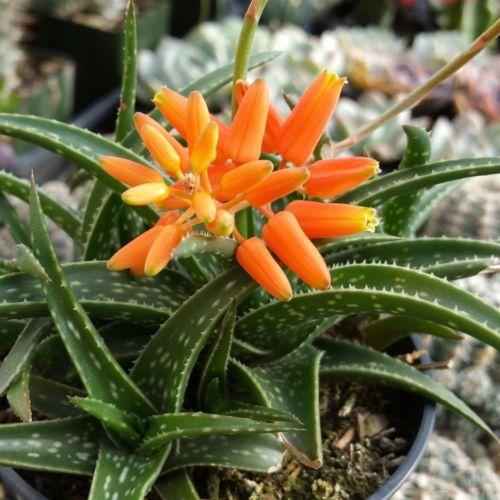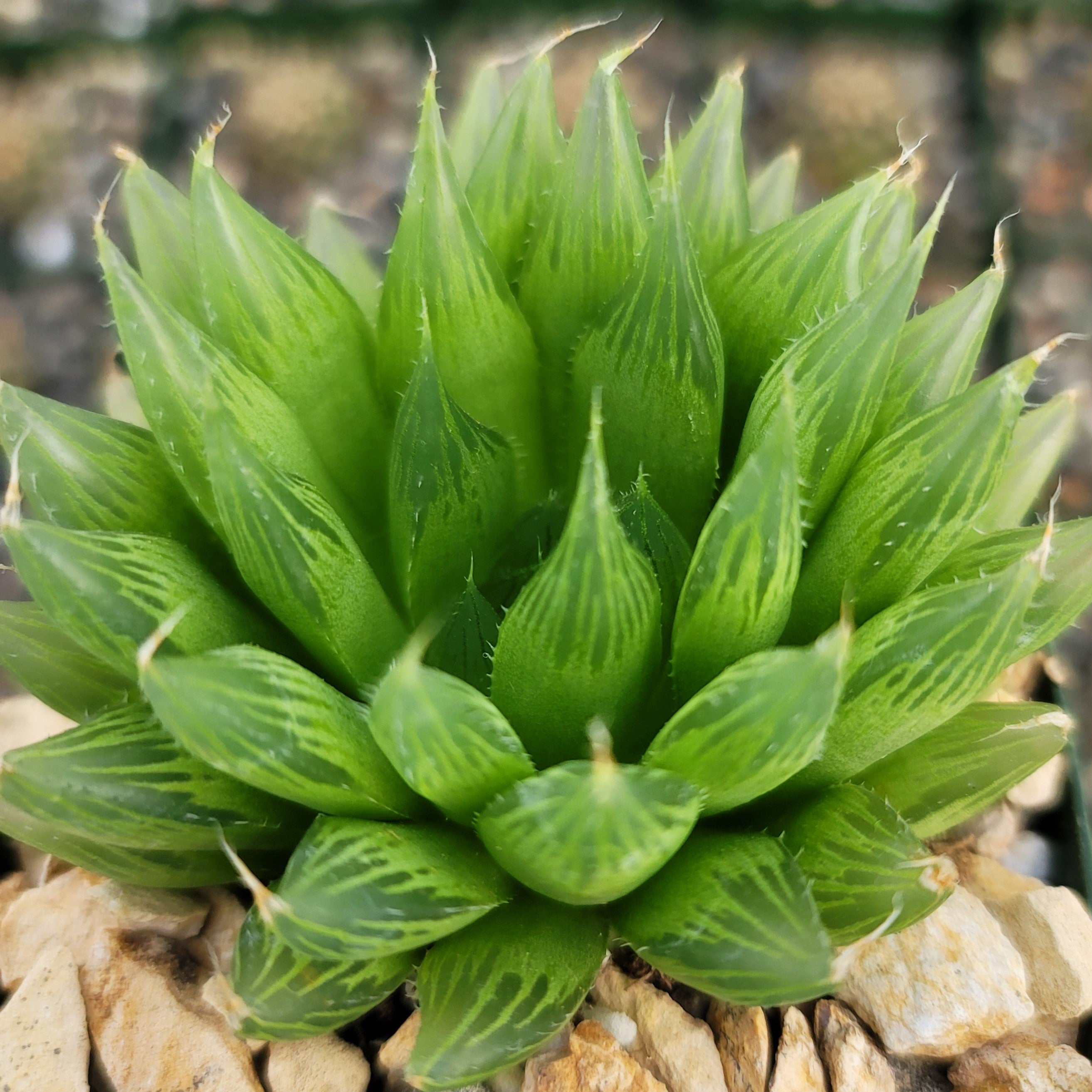Everything You Need To Know About - Tillandsia Caput Medusae
Updated: January 28, 2025

Caput Medusae is an elegant-looking versatile air plant belonging to the Bromeliaceae family. Most owners fall in love with the curved silvery-green leaves of the flowering plant, and it is just another good addition to your striped plant collection. It is also commonly known as the Octopus plant and Medusa’s head. Growing without soil or substrate, the plant can be reared and placed almost anywhere in the house, indoors or outdoors. Explore some brilliant caput-medusae pictures online to make it to your desktop or laptop wallpaper as the elegance of this air plant is mind-blowing!
Follow this blog to learn more about medusa air plant care, Tillandsia caput-medusae life cycle, and much more. Sometimes, the curvy leaves of the plant and its swollen base give the appearance of a jellyfish. You can also term your unique air plant as caput medusae jellyfish air plant.
Summary of Caput Medusae Air Plant
Caput Medusae has its origin in the South American continent. Countries include Mexico, Honduras, Guatemala, and El Salvador. It is widely popular for its common name Octopus plant and Medusa’s head. These rosette-forming plants can grow from 15 to 40 cm tall in height. Belonging to the Bromeliaceae family, the Medusa air plant is a beautiful flowering plant exhibiting epiphytic habit, an evergreen herb. You can witness tubular-shaped Blue-red flowers in the early summer.
Caput Medusae Air Plant Care
Even though a caput medusae plant is quite easy-to-grow and undemanding, you still need to take care of a few things to ensure that the plant has healthy growth; it blooms on time and produces offsets for propagation.
-
Caput medusae watering
The great thing about having the caput medusae plant at home is that you do not have to bother about its watering needs. This air plant can very well survive without water for days. It does not prefer much water. Minimal watering is therefore advised. If you have other Tillandsia varieties, you might be giving them an occasional soak in a water bowl. That is not recommended for caput-medusae. An infrequent misting or spraying is enough to keep the plant happy and growing.
One Tillandsia caput-medusae care tip is that instead of misting the base of the plant, go for the tip or the head of the air plant. Also, during the hot season, choose to mist the plant at least two to three times during the week. Reduce it to about once a week during winters. The other very important aspect of watering your plant, in fact, any air plant, is that you need to ensure it dries up completely. Or else, the trapped water can quickly rot the plant.
Sometimes you might want to soak the Tillandsia caput-medusae air plant. When you do so, make sure that you go in for a quick soaking session - keep it for ten to fifteen minutes, not more. The method is the same as other air plants. Take a bigger bowl, fill it with water and turn the plant upside down when soaking. Once the plant is taken out of the bowl, ensure to give it a good shake so that the excess water sticking to the plant shrugs off.
-
Light requirements to grow Caput Medusae
Tillandsia caput-medusae loves bright light. It could be natural light or artificial. The best is to grow it indoors and place it near a window in the morning or evening. But, remember to put the curtains or shades on so that it does not receive direct light. The north-facing direction is the best place to keep the Medusa plant in your house.
-
Temperature
What is the ideal temperature when the plant sprouts into healthy Tillandsia medusae flowers? This aerial plant prefers warmer temperatures. It is not frost-hardy and shies away from winters. Place the plant in a temperature zone ranging from 18° to 30°C or 65° to 86°F. At any cost, ensure that the plant is not placed at a temperature that is lower than 12°C.
-
Fertilization of Caput-medusae
Give the air plant moderate doses of top feed, for example, fertilizers made specifically for the Bromeliad family. During spring and summer, fertilizer once or twice a month is recommended. But either stop fertilization or make it a once-a-month affair during winters.
-
Propagation of caput medusae air plant
The best way to propagate the octopus plant is with the help of Tillandsia caput-medusae pups or offsets.
Decorating your Place with Tillandsia caput-medusae
The caput medusae look extremely captivating in your home or garden as an air plant. The best part is that these plants allow you to showcase your creativity, which is why these flowering plants are so versatile. Here are some of the ways to display this plant:
- Mounted on wood - You can use any item made of wood, for example, large branches, rocks, plant holders, or corks to place the air plant. And you can place them vertically, upright, horizontally, or even upside down for a caput medusae jellyfish air plant look. One thing to take care of is that the substrate used should not be the type that retains water or supports fungal growth. With the help of an adhesive, you can tape or stick the plant to the mounted item.
- Aeriums - Aeriums are glass containers and the air plant looks vivid in these containers. Aeriums support the passage of air, which makes them more viable for growing air plants. Also, the aeriums can be hung in your living room or patio using decorative or ornamental strings. Refer to some caput-medusae images online for a better idea of how to go about decorating it in your space.
- Terrariums - All Tillandsia species look awesome in terrariums that are glass containers too. You can use sealed or open terrariums. With the help of decorative elements like seashells or pebbles, the show of the arrangement can be further enhanced.
If it is planted outdoors, you can place the air plant right on a cactus to convert it into a caput medusae cactus plant or place it close to a striped succulent. You can also affix it onto rocks or the branches of a grown-up tree.
FAQs
-
What is caput medusae?
Tillandsia medusa is a flowering air plant native to South America. They are known to grow on the branches of tall trees in their native region, almost as high as 2,000 meters. The caput medusae definition comes from Medusa, who was an evil creature with long, curvy, and snake-shaped hair strands as per the Greek language. Similarly, the medusa air plant has snake-type leaves, which is why it has got this name.
-
When was the caput-medusae first described?
It found a mention for the very first time in 1880 by Charles Jacques Edouard Morren, a Belgian botanist with expertise in the Bromeliaceae family.
-
What is special about caput-medusae pronunciation?
Caput is pronounced as ‘Ka-put,’ and medusae is pronounced as ‘Medusa’. The ‘e’ is silent.
-
What is special about caput medusae air plant flowers?
The octopus plants flowers in early summer in its natural habitat. If cultivated properly, it will burst into multiple red inflorescences during spring or early summer. The inflorescences are unbranched and digitate. On these, tubular-shaped violet-pink or bluish-red Tillandsia caput-medusae blooms appear. Slowly, these flowers convert into offsets or medusa air plant pups that can be used for propagation.
-
How do air plants get the required nutrients for growth?
Most Tillandsia varieties do not require any substrate or soil to grow. So, how do they get nutrition to survive? It is because the leaves of this species have tiny vessels called trichomes. The trichomes absorb water and nutrients from the air. This fulfills the required nutrition of the plant, and they do not just survive but thrive happily for a long time. It is also why most air plants can be affixed to indoor areas or substrates where they can keep growing, adding aesthetic beauty to the place.
-
How do I know that my Medusae plant needs to be watered?
Look closely at the leaves of the plant. If it has started to shrivel or curl, it means that the plant requires watering.
-
How to identify Tillandsia medusae superior?
The octopus plant exhibits epiphytic growth. It is an evergreen air plant that has hardly any roots. Its bulbous base is a sure-shot giveaway. The plant reaches an overall height of about 40 cm. The rosettes are thick and twisted that taper towards the end. The leaves seem to grow from a pseudobulb. Interestingly, the snake or octopus-like leaves of the plant appear silver-green or silver-blue in color. You can also see the rhizomes or the tiny hair-like structures on the leaves with naked eyes. When the caput medusae flower is all ready to come out, the leaves in the center start to develop a different blush that is of light pink coloration. The red inflorescence is almost cherry-red and the small Tillandsia caput-medusae flowers are white and purple in color.
The good news is that Tillandsia caput-medusae does not demand too much of your attention. And this easy-to-grow Medusa air plant is perfect for beginners as well as new gardeners. Expand your air plant collection with this stunning gem!



























